Every vehicle comes with a manufacturer-recommended tire pressure range. Tire or air pressure is measured in PSI (pounds per square inch). It is a common misconception that the PSI on the side of the tire is the recommended level. This is incorrect. The PSI on the tire is the MAXIMUM level the tire can hold. Additionally, having too low of a PSI may cause damaging wear on the tires, which can lead to poor fuel efficiency and flat tires.
Keep these items in your vehicle at all times:
- Tire pressure gauge (either a standard or a digital)
- Wipes for cleaning your hands
Step-by-step guide:
- The only way to know if a tire is truly at the appropriate pressure is by using a gauge. Often a tire will look fine, but it is actually low. When you check tire pressure, be sure to check all four tires.
- Find the recommended PSI for your vehicle. The best place to locate this information is on the inside of the driver’s side doorjamb. As a back-up, check your owner’s manual.
- It’s best to let your tires cool and rest prior to checking their pressure. If you check them while they’re hot, you will not get an accurate reading.
- Remember that you’ll need to work on all four tires (or two if you have a motorcycle). Locate the small little hose on the tire that is the air valve.
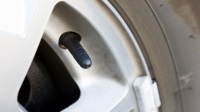 Remove the cap and keep it someplace safe like your pocket. You don’t want it to roll away or get blown or kicked under your car. NOTE: These air valves are usually dirty so if you don’t have gloves, avoid touching your clothing until you can wipe your hands clean.
Remove the cap and keep it someplace safe like your pocket. You don’t want it to roll away or get blown or kicked under your car. NOTE: These air valves are usually dirty so if you don’t have gloves, avoid touching your clothing until you can wipe your hands clean. - Press the tire pressure gauge against the valve. Use firm pressure and ensure that the seal between the gauge and the valve is completely solid. Release after a second or two. NOTE: If you hear any loud hissing, you’re letting air escape and you won’t get an accurate reading.

- Use an air compressor or an air machine (available at many gas stations) to add (or release) air to match the recommended PSI. The air machine nozzle must be firmly and securely pressed onto the tire valve or you will let air out of the tire.
- Check the pressure again to make sure it’s correct. And remember, never overfill the tires.
- Repeat for each of the remaining tires. Be sure to check your spare tire, too!
https://www.youtube.com/watch?v=nRJ2L7MXNjY&feature=youtu.be
Whether you’re on the road or at home, having GEICO Emergency Roadside Assistance on your auto insurance policy is a must-have for things like a flat tire, lock-out or breakdown. Add it to your policy for just pennies a day per vehicle.
Need help right away? Click here to request roadside assistance.

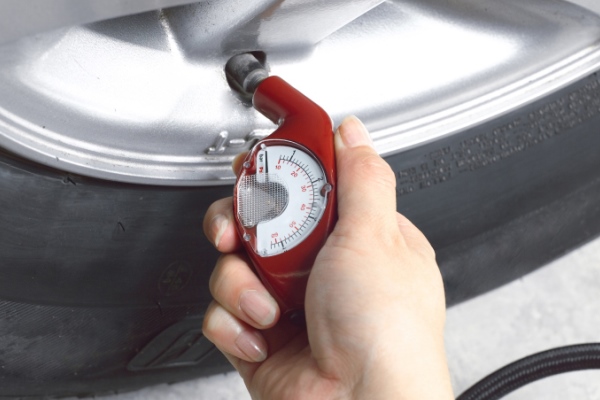

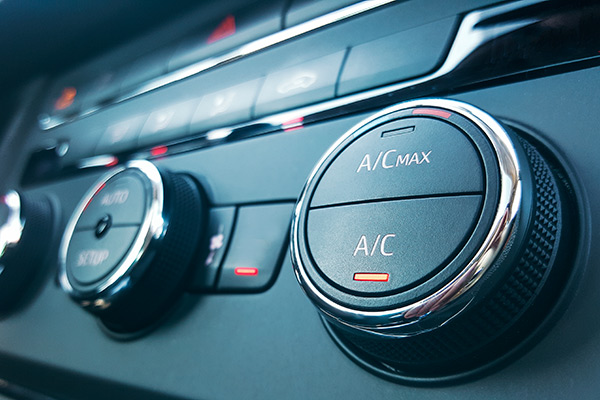
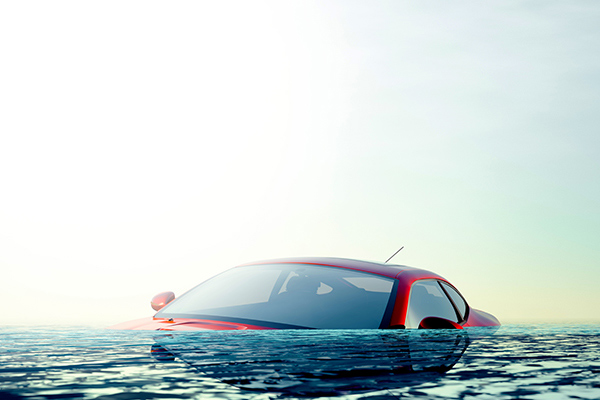
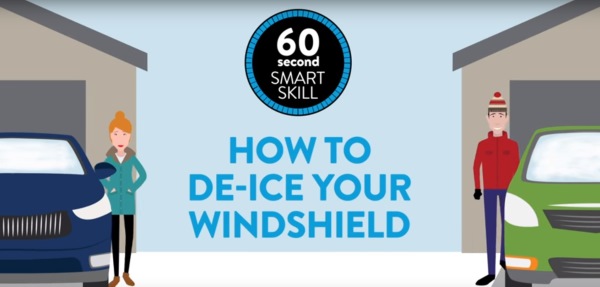
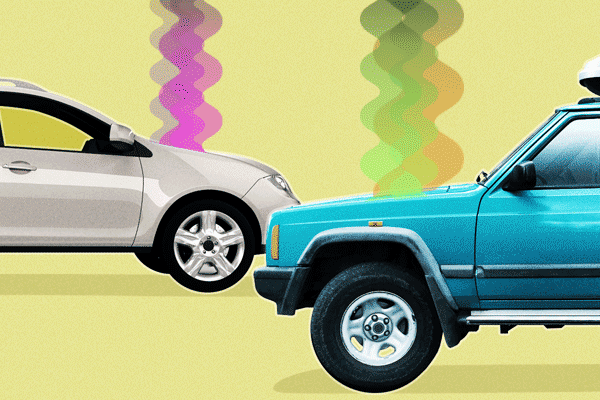
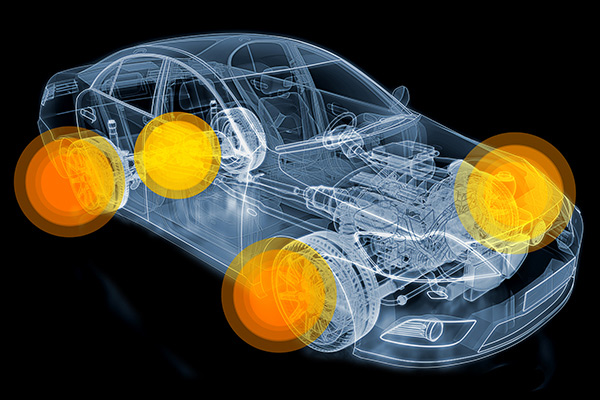
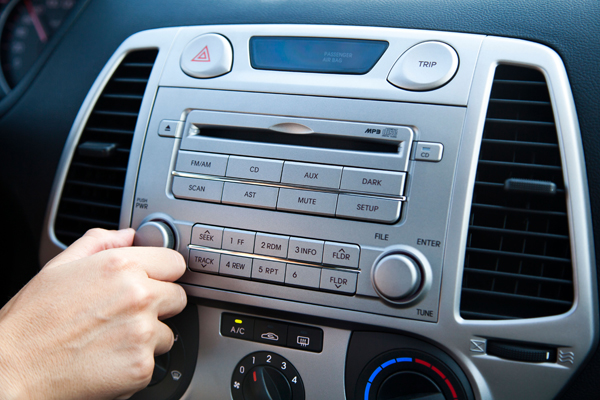
Vincent Distefano says,
Very good advice to all policy holders to know As we have people think because the car is new they don’t know they are to check every month or as weather allows. such as cold months or summer months
Ann Shepherd says,
Good video but safety first!
Checking tire pressure should be done in a safe location! On the street is not ideal when you are crouched in lane of traffic! She should have pulled into the driveway if it was flat enough.
Temperature is also an important factor as it greatly effects pressure reading.
Anjanette Busd says,
Good to know information.
Angel says,
Thank you, great info. I would like to see more how to videos like this.
Sun-Hee Jeon says,
A great information! Very helpful!
Thank you!
Melinda Burkhart says,
Thank you, this really helped!!
Melinda Burkhart
Ellen Escano says,
So helpful
Thank you
Arnite says,
How to check tire pressure hint was very helpful. Thanks
Tobias Armstrong says,
Thanks for the pointer that sometimes tires can look fine but are actually under on their PSI. I usually decide to check on my tires only if I feel like they look a little lower than normal, so it’s good to know that I may need to be checking them more than I realize. Thanks for the heads up.
Paige Smith says,
This article really gives me some good insight on what I could do for checking my tire pressure. I want to make sure I do not get a flat on the side of the road. Now I know how to make sure that my car is ok, rather than having to got to an auto body shop later.
James Bay says,
I have heard that tire pressure lowers in the winter. However, I don’t know how to check the pressure. This article will be very helpful. Thank you for the information.
Zach Thalman says,
Tire pressure is pretty important when driving. I need to get a new monitoring system for my motorcycle. I think I have been slowly losing air in one of my tires. The monitoring system doesn’t show any signs, but I think it has been losing a lot of air.
Deanna R. Jones says,
I know that I’m supposed to check my tire pressure, but I’m not exactly sure the proper way to check it. Usually, I’ll just look at my tires and refill them whenever they look like they’re looking a bit deflated. I know that’s a good way to get a flat, so I should start checking them from now on. It’s really cool that I can use a tire gauge at any gas station. I didn’t know that they had them there. Since I can use one anytime I go to the gas station, I’ll start gauging the pressure in my tires more. Thanks for the tips!
Andria Payne says,
Glad to see this in print, I was taught all this when I first learnt to drive, age 18 I paid to learn from a credited driving school. This is something all of us need to know, so keep spreading the word. Thank You. Andria now age 73!!!
Sara Killinger says,
As someone who is not particularly familiar with cars I typically leave all maintenance to my mechanic. I decided that it was time for me to learn basic maintenance skills and figured that learning how to check tire pressure would be an easy way to start. Thanks for letting me know that it’s best to let my tires cool before checking their pressure. I probably would have tested them immediately after driving home from work while they are still hot. How long after driving your car does it take for your tires to cool?
Chi Chu says,
Basic tire pressure check’s and tire pressure inflation.Best check tire pressure and tire air pressure inflation in the evening like 7-8 o’clock in the summer time and 6-7 o’clock in the winter time.Rubber expand and deflate all the times in heat temp or cold temp, the pressure about 40 psi for compact car 45 psi for a compact truck that about 5 psi over for allowance in for roads hazard, bad conditions of the old and worn out roads too.